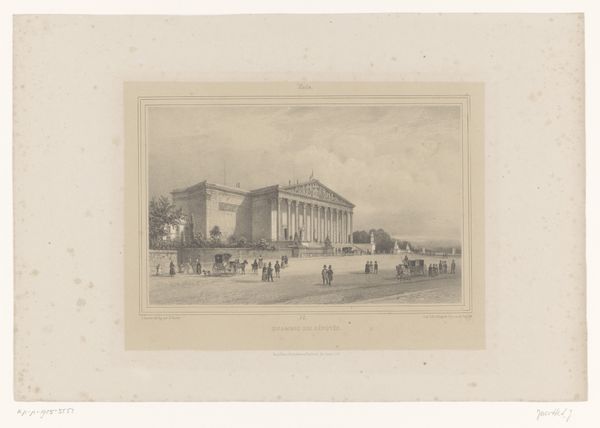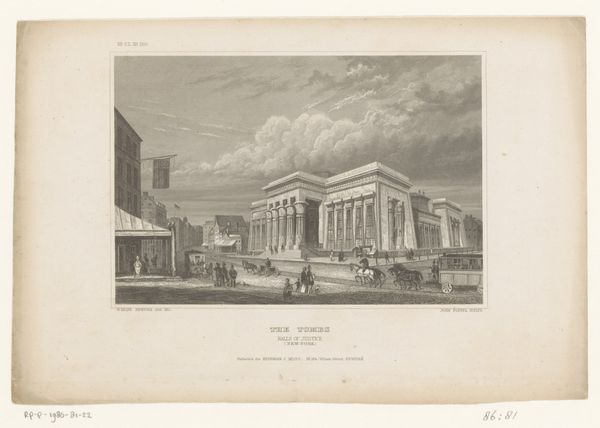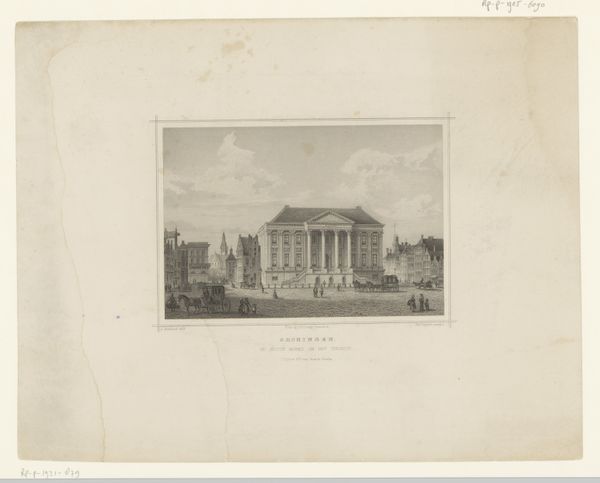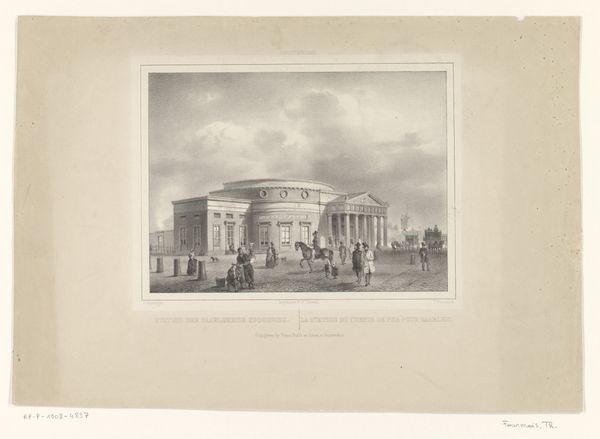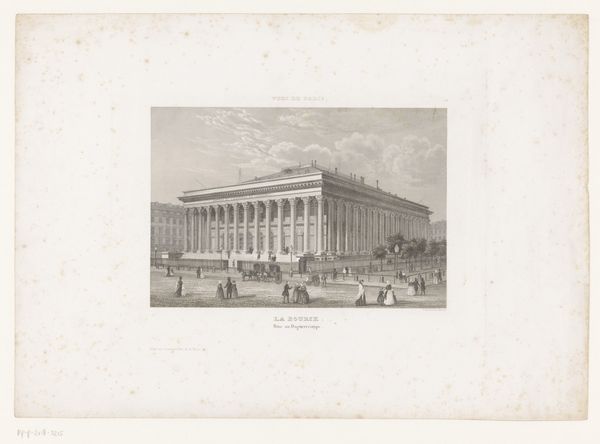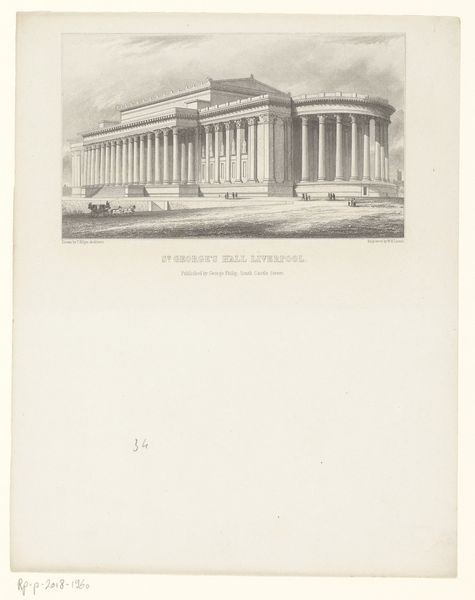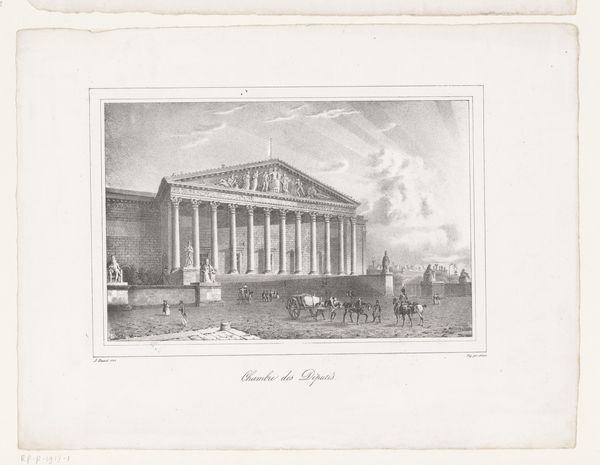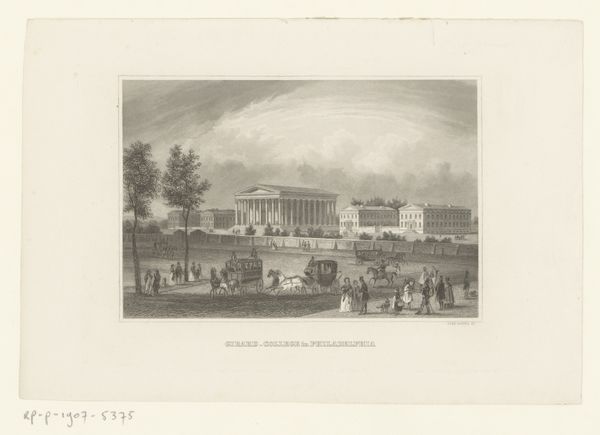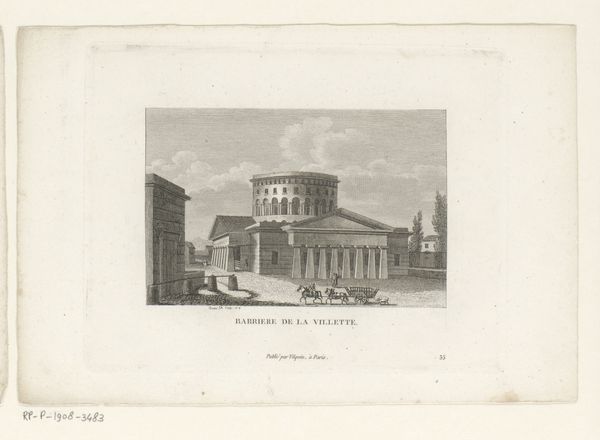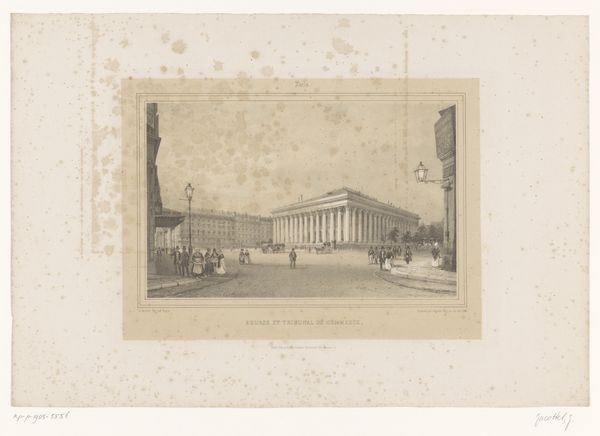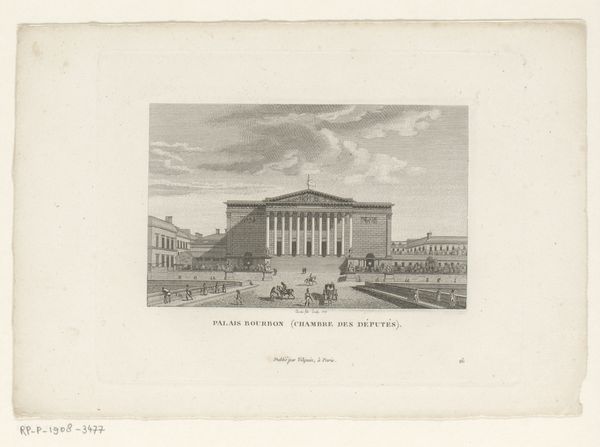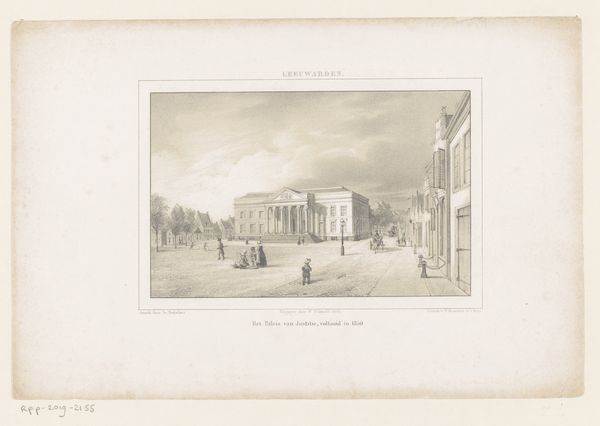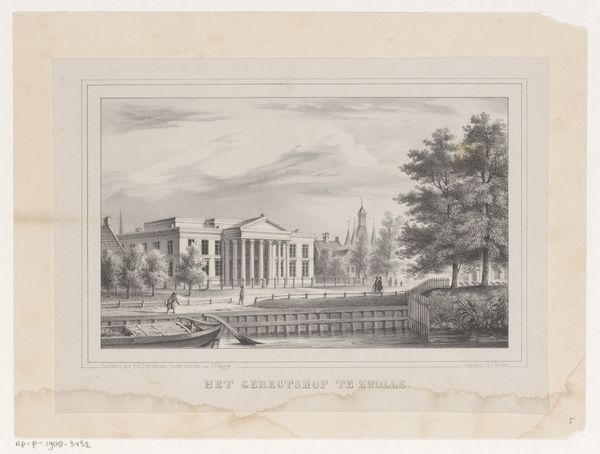
print, etching, engraving
# print
#
etching
#
landscape
#
perspective
#
romanticism
#
cityscape
#
engraving
Dimensions: height 354 mm, width 547 mm
Copyright: Rijks Museum: Open Domain
Editor: This is "Zicht op de kerk San Francesco di Paola in Napels," an 1847 etching by Charles-Claude Bachelier. It presents a very formal cityscape, focusing on the church. What strikes me is the meticulous detail in the print, almost architectural in its precision. How do you approach this work? Curator: From a materialist perspective, I’m immediately drawn to the choice of printmaking, specifically etching. Etching allowed for the mass production and dissemination of this image, effectively commodifying a view of Naples and the church. We must consider the labor involved, from the artist's initial design to the artisan meticulously creating the plate and, finally, to the printing process itself. It transforms culture into something easily consumed, don't you think? Editor: I hadn't considered the reproduction aspect. I was just thinking about the skill involved in creating that level of detail with etching. The way the light and shadow define the architectural forms... Curator: Precisely, that detail speaks to the control of the medium. However, that control and artistry is itself a kind of labor. Also, the materials matter. The type of paper, the inks used – these all speak to a specific time and place of production. Furthermore, prints like this fuelled tourism. These images weren't just about art; they were about selling a lifestyle, a fantasy of Italian grandeur. To whom were these prints marketed, and what social strata were they intended to reach? Editor: So you see the print not just as an artwork, but also as a manufactured object, tied to economic and social systems of the time? Curator: Exactly. We’re dealing with a confluence of artistry, labour, and commerce. Looking at the etching itself allows us to delve into these connections. By understanding the materials and methods, we also learn something about the consumers of such artworks. Editor: I now see that it represents so much more than simply a pretty view! Curator: Indeed! A deep dive into its production allows us to really think about this artwork critically!
Comments
No comments
Be the first to comment and join the conversation on the ultimate creative platform.
